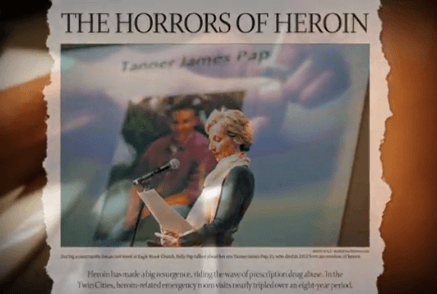Today started out like any other Saturday morning, which for me involves checking emails and Facebook. Shortly after starting to scroll through my feed, I saw my friend had shared a heartbreaking story: the strange sentencing dilemma of a heroin dealer who was complicit in the death of her son’s namesake—a teenage boy in upper middle class Middle America.
This story has become far too common, yet few Americans understand how thoroughly heroin—particularly black tar heroin—has infiltrated every corner of the United States in the past few years. But this isn’t the heroin most of today’s parents think of. We remember drugged-out rock stars found in hotel rooms with needles still sticking out of their arms or homeless hobos living under highway overpasses in a dreamless fantasy world. Now, the heroin addict is just as likely to have the face of a 16 year-old high school cheerleader or track star.
On May 8, the St Louis Post-Dispatch published a story about Richard Klemis, a British citizen who was found guilty by a federal jury in February of nine drug charges, including distribution of a controlled substance resulting in death. He was living with his mother in O’Fallon, Illinois—the same town I lived in for three and a half years while my husband was stationed at a nearby Air Force base—while fleeing a criminal case in the United Kingdom. According to the Post-Dispatch, Klemis sold the heroin that killed Tyler P. McKinney, 19, on Feb. 23, 2011.
McKinney was working at a car dealership at the time of his death. His mother said that he had won a lacrosse scholarship to Missouri Baptist University. A friend of mine who still lives in the area named her own son Tyler after McKinney, so this story hits particularly close to home for her—and for me, as I knew many kids who attended O’Fallon Township High School, where Klemis sold heroin to several dozen current and former students.
None of the publicly available news stories about Klemis’ activities indicated what kind of heroin he was dealing or where he obtained it. But statistically speaking, the odds are high that he was dealing black tar heroin originally sourced in Mexico. This particular brand’s popularity has skyrocketed in recent years in parallel with an epidemic of addiction to prescription opiates like Oxycontin. Black tar heroin has become more potent, and cheaper, than black market oxycodone pills, and the fact it can be smoked makes it more appealing to teenagers who don’t want to deal with the stigma of injecting drugs.
The strange part of this tragedy comes in the sentencing of Klemis in a federal court in East St Louis. Klemis was extradited to Illinois with some prison time remaining in Great Britain on an eight-year sentence for dealing heroin there. Under the terms of the extradition, US officials agreed to return him home to complete his sentence before he does any prison time in the US. But prosecutors here feared that UK judges might think a sentence more than 20 years was too long, and refuse to send him back. In a strange reversal the judge called “curious,” the prosecution requested a 20-year sentence to help ensure an extradition, whereas Klemis’ defense team requested the recommended 33-year sentence to prevent it.
Assistant US Attorney Robert Garrison predicted more legal challenges before Klemis is returned to the US. “The Government concludes … that a 20-year sentence will probably pass muster with the UK courts, but only just.”
As for the family and friends of Tyler McKinney and other children who have been impacted by the infiltration of heroin into upper middle class communities once thought immune to the scourge of such insidious drugs, they still mourn these tragedies and worry about the future of their Middle America hometowns. Tyler’s mother, Dawn McKinney, asked for the maximum sentence agreeable to British courts. “There are not adequate words to describe” the impact of her son’s death, she said.
Sylvia Longmire is a border security expert and Contributing Editor for Breitbart Texas. You can read more about cross-border issues in her latest book, Border Insecurity: Why Big Money, Fences, and Drones Aren’t Making Us Safer.

COMMENTS
Please let us know if you're having issues with commenting.